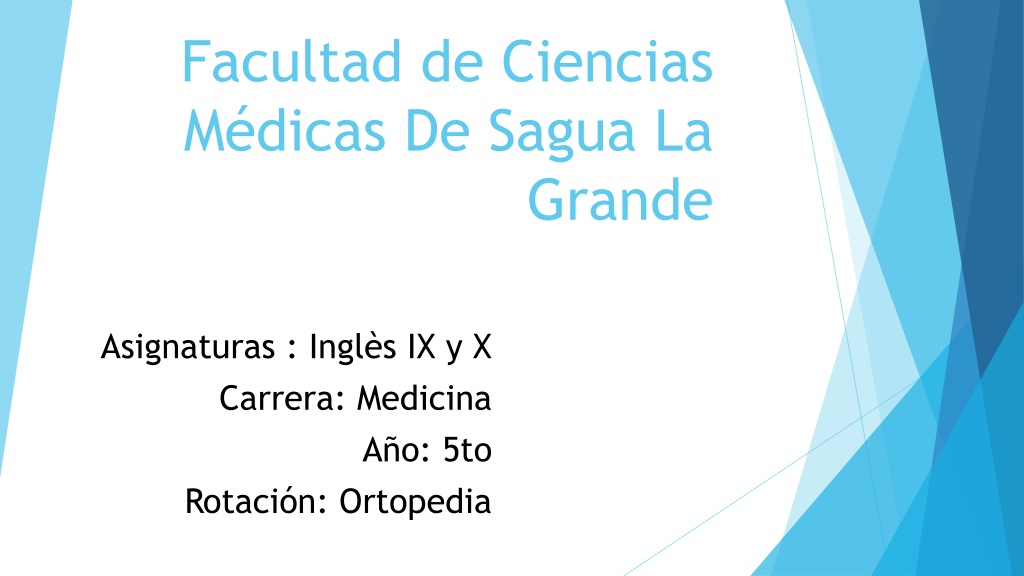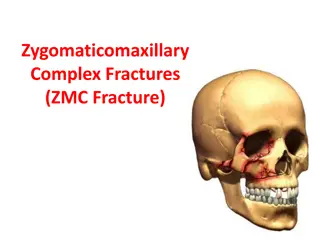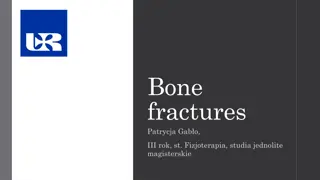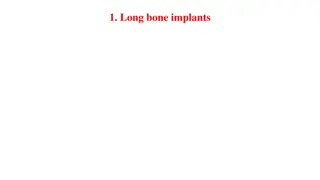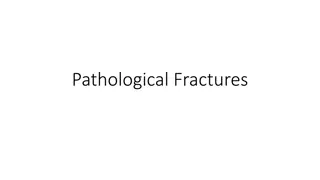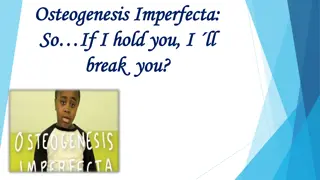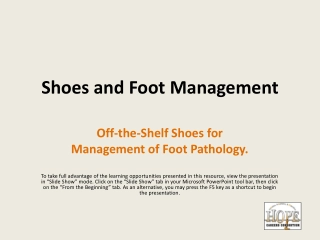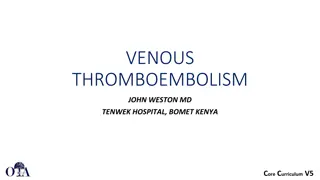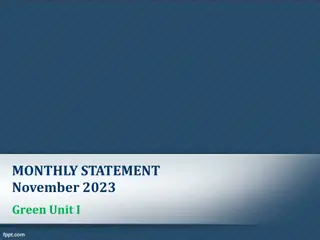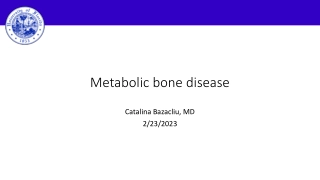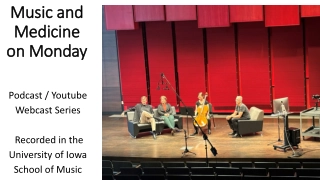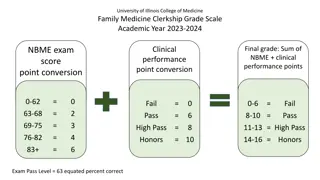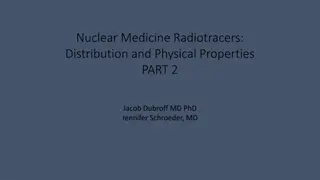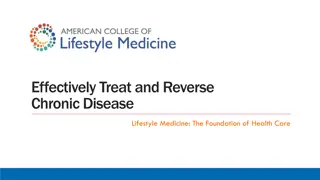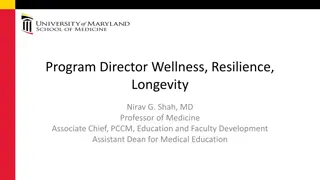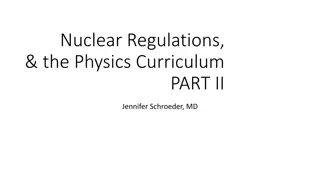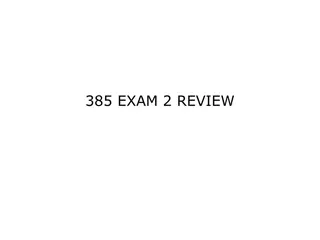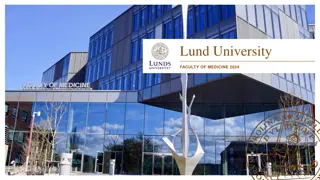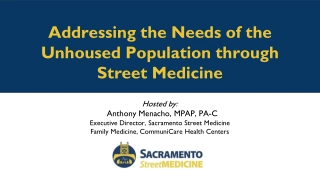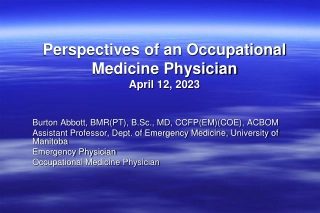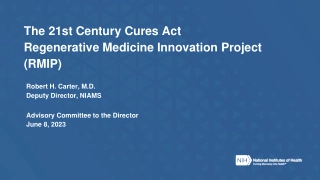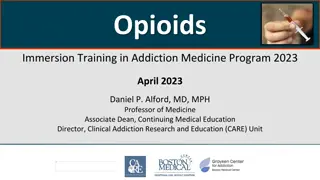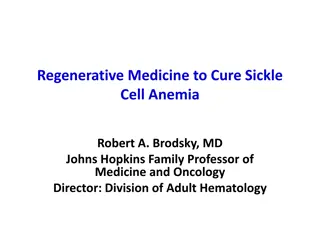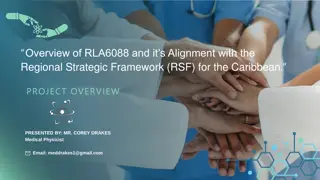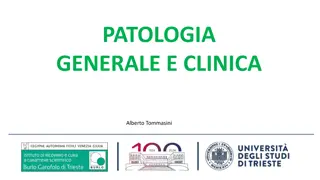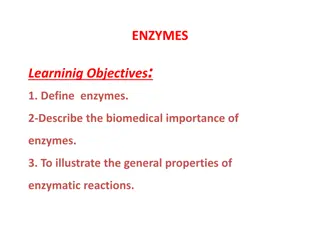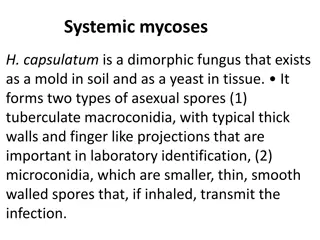Understanding Bone Fractures in Orthopedic Medicine
Explore the features, causes, signs, and classifications of bone fractures in orthopedic medicine, including mechanisms, soft tissue involvement, displacement, and fracture patterns. Learn about the definition and common symptoms associated with bone fractures. Images and descriptions provide insights into traumatic, pathologic, and periprosthetic fractures.
Download Presentation
Please find below an Image/Link to download the presentation.
The content on the website is provided AS IS for your information and personal use only. It may not be sold, licensed, or shared on other websites without obtaining consent from the author. Download presentation by click this link. If you encounter any issues during the download, it is possible that the publisher has removed the file from their server.
Presentation Transcript
Facultad de Ciencias M dicas De Sagua La Grande Asignaturas : Ingl s IX y X Carrera: Medicina A o: 5to Rotaci n: Ortopedia
Profesora asistente: Jessie SarduySantana Profesora auxiliar: Elizabeth Finalet Marreos
Bone Bone Fracture Fracture
Objectives: To describe the main features of Bones fractures
Definition Definition A bone fracture is a medical condition in which there is a partial or complete break in the continuity of the bone.
Causes Traumas Stress Osteoporosis Osteopenia Bone Cancer Osteogenesis Imperfecta
Signs and Signs and Symptoms Symptoms Pain Edema of nearby soft tissues Severe Funcional Impairment Involuntary muscle spasms trying to hold bone fragments in place. Hematoma on the fracture site. Damage to adjacent structures such as nerves, muscles or blood vessels
Classification Classification In orthopedic medicine, fractures are classified in various ways
Mechanism Mechanism Traumatic fracture Pathologic fracture Periprosthetic fracture
Soft Soft- -tissue involvement tissue involvement Closed fractures Open/compound fractures: Clean fracture Contaminated fracture
Displacement Displacement Non-displaced Displaced Translated, or ad latus, with sideways displacement Angulated Rotated Shortened
Fracture pattern Fracture pattern Linear fracture Transverse fracture Oblique fracture Spiral fracture Compression fracture/wedge fracture Impacted fracture Avulsion fracture
Fragments Fragments Incomplete fracture Complete fracture Comminuted fracture
Anatomical Anatomical location location Skull fracture Spinal fracture Rib fracture Sternal fracture Shoulder fracture
Anatomical Anatomical location location Arm fracture Hand fracture Pelvic fracture Legs fracture Foot fracture
Diagnosis Diagnosis Physical Examination Radiographic Imaging In situations where projectional radiography alone is insufficient, Computed Tomography (CT) or Magnetic Resonance Imaging (MRI) may be indicated
Complications Complications Immediate complications Systemic Hypovolaemic shock Local Injury to major vessels Injury to muscles and tendons Injury to joints Injury to viscera
Early complications Systemic Hypovolaemic shock ARDS Adult respiratory distress syndrome Fat embolism syndrome Deep vein thrombosis Pulmonary syndrome Aseptic traumatic fever Local Infection Compartment syndrome
Late complications Imperfect union of the fracture Delayed union Non union Mal union Cross union
Others Avascular necrosis Shortening Joint stiffness Sudeck's dystrophy Osteomyelitis Ischaemic contracture Myositis ossificans Osteoarthritis
Treatment Treatment Treatment of bone fractures are broadly classified as surgical or conservative Conservative Treatment Conservative Treatment Repose Analgesics Anti-inflammatory medications Immobilization
Surgical Treatment Surgical Treatment Usually surgery is performed only if conservative treatment has failed, is very likely to fail, or likely to result in a poor functional outcome .
Prognosis Prognosis The prognosis is Reserved Typically people get better on weeks or months but complications are very frequent
EXERCISES: You have been selected to give a health talk to the senior population of your community. You may wish to have some written notes as a guide. Work in groups to write an essay in which you may include some of the following issues, e.g. What a fracture is Risk for fractures Forms to avoid them Most common fractures Feel free to add any other relevant aspect.
Bibliografia English through Medicine II Students and teachers book Bedside English
